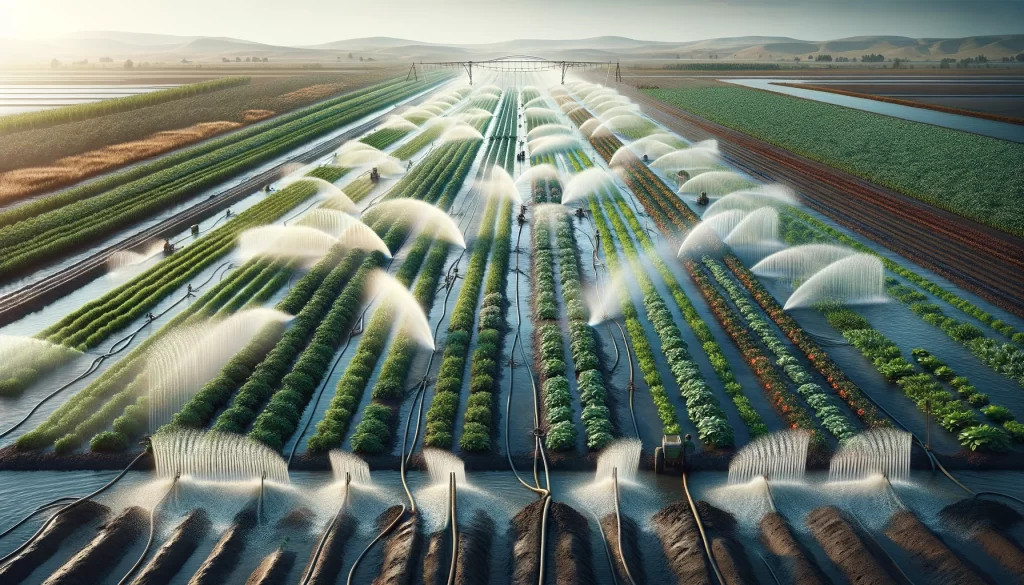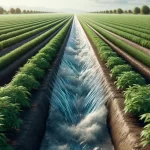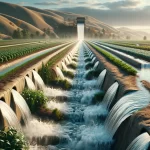Flood irrigation is a method of irrigation that involves temporarily flooding crop fields with water, allowing the liquid to be evenly distributed over the soil surface. This method is one of the oldest and simplest irrigation methods used in agriculture and has been practiced for centuries in various parts of the world.

Here are more details about flood irrigation:
Operation
- In flood irrigation, water is introduced into the crop field through channels, pipes, or ditches.
- Once the water reaches the field, it is evenly distributed over the soil surface, forming a layer of water covering the entire cultivated area.
- The flooding of the field can last from a few hours to several days, depending on the irrigation need and crop characteristics.
Advantages
- Simplicity: Flood irrigation is a simple and easy-to-implement method that does not require sophisticated equipment.
- Cost: It is relatively inexpensive in terms of infrastructure and maintenance, making it accessible to farmers with limited resources.
- Efficient water use: When properly executed, flood irrigation can be quite efficient in terms of water use, as it minimizes losses from evaporation and deep percolation.
- Soil improvement: Temporary soil flooding can help improve its structure and fertility, while allowing better water infiltration and retention.

Limitations
- Uniform distribution: Sometimes, achieving uniform water distribution over the entire cultivated area can be difficult, resulting in dry or waterlogged patches.
- Water loss: If not managed properly, flood irrigation can result in significant water losses due to evaporation and surface runoff.
- Labor requirements: In traditional flood irrigation systems, water application and control can require intensive labor.
Flood Irrigation and Crops
Flood irrigation is especially suitable for certain types of crops that require specific soil moisture levels and benefit from temporary flooding. Some of the most common crops recommended for flood irrigation are:
- Rice: Rice is perhaps the most well-known and widely cultivated crop that greatly benefits from flood irrigation. Rice requires consistent water levels in its fields for much of its growth cycle, and temporary flooding provides optimal conditions for its development.
- Alluvial root crops: Crops such as beets, carrots, and celery, which develop deep roots and need well-drained and uniformly moist soils, can benefit from flood irrigation to maintain soil moisture consistently.
- Swamp crops: Some plants, such as lotus and wild rice, are native to swampy environments and naturally adapt to flooded soil conditions. These crops thrive in fields that can be temporarily flooded.
- Some vegetable crops: In certain cases, vegetable crops like spinach, lettuce, and broccoli can benefit from flood irrigation, especially in areas where agriculture is practiced on clay soils with poor water infiltration.

It is important to note that while flood irrigation can be beneficial for these crops, its implementation should be done carefully to avoid issues such as soil salinization, erosion, and disease proliferation. Additionally, water management practices should be sustainable and environmentally respectful to ensure the long-term effectiveness of the irrigation system.
 AgronoBlog – Agriculture Blog
AgronoBlog – Agriculture Blog 


